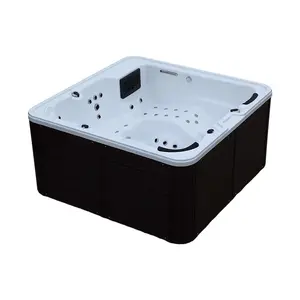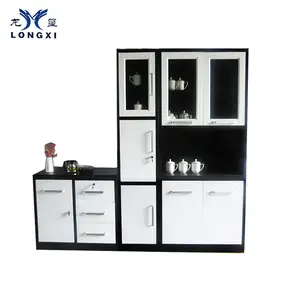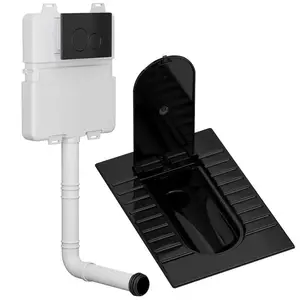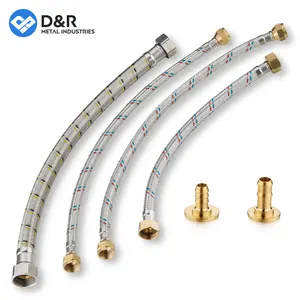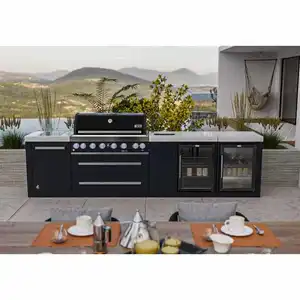Popular in your industry













































































Related Searches:









































































































































Top categories
About cable for stair railing
Introduction
When it comes to home renovation, stair railings often go unnoticed, despite their crucial role in enhancing both the aesthetic appeal and safety of your home. This comprehensive guide will help you choose the perfect cable for your stair railing, discussing the importance of cable railings, the different types available, and the factors to consider when making your choice. Whether you're seeking durability, a modern look, or a balance of cost and quality, this guide will equip you with the knowledge to make an informed decision.
Understanding the Importance of Cable for Stair Railing
Cable railings are an excellent choice for decks, stairs, and balconies, adding safety and beauty to your home. They are robust, sturdy, and aptly sized, offering many benefits over traditional railings. Easy to install and customizable to match your home design, cable railings add value to your house. Made of corrosion-resistant materials, they last for years and require minimal maintenance. The narrow, evenly spaced cables provide an unobstructed view, making them ideal for stairways and balconies.
Types of Cables Suitable for Stair Railing
Two main types of fastening methods are used when assembling a cable railing system for staircases: swage or swageless. Swaging involves using force to compress the fitting to the cable, creating a strong connection. Swageless systems use proprietary hardware where the cable is inserted into the fitting, but a locking mechanism prevents the cable from being pulled out. The cable railing systems can be differentiated by the post types: metal posts or wood posts. Metal posts offer a sleek, modern look while providing strength and durability. Wood posts, on the other hand, offer a warm feel to offset the cable railing.
Stainless Steel Cables
Stainless steel cable railings are an excellent choice for stair railings due to their durability and minimal maintenance. They are often made from marine-grade 316L stainless steel, which is corrosion-resistant and can withstand extreme weather conditions. The best cable for the railing is a 1×19 construction type 316L stainless steel cable, which is rigid and does not stretch. However, avoid using chlorine bleach or chloride-containing products for cleaning, as they can damage the railing. Regular cleaning with a cloth and mild car wash soap is sufficient.
Galvanized Steel Cables
Galvanized cable railing posts, coated with a layer of zinc, are an excellent choice for stair railings. Their anti-corrosion properties make them perfect for both indoor and outdoor use. They add a touch of elegance to your establishment, whether used for fences or trellises. These posts not only preserve the feeling of openness and spaciousness indoors but also offer an unobstructed view outdoors. Their durability and low maintenance make them a popular choice for homes and businesses. They can withstand the test of time, adding value to your property.
Coated Cables
Powder coated cable railing kits are a simple, cost-effective option for stair railings. These kits utilize galvanized steel or stainless steel posts, offering durability and aesthetic appeal. The powder coating provides an additional layer of protection, making these kits suitable for various environments. They are easy to install, ensuring safety and beauty. In addition to powder coating, bare finishes and metallic coatings are also available, offering a range of aesthetics to suit your home's design.
Factors to Consider When Choosing Cables for Stair Railing
When choosing cables for stair railing, consider factors such as cost-effectiveness, aesthetic appeal, and general upkeep. Balance cost with quality, as cheap materials may not provide the safety you need. Aesthetically, stainless steel cables can add a modern touch to your home. Maintenance is also crucial; choose materials that require minimal upkeep. Durability and longevity are important, especially for outdoor railings exposed to weather conditions. Ensure your choice is ADA compliant and meets local building codes. Always prioritize safety and quality when selecting your railing materials.
Durability and Strength
Cable railing, often made from stainless steel, is a popular choice for its durability, strength, and modern aesthetic. The stainless steel fittings are 'smashed' onto the cable, creating a strong connection that can withstand incredible force. This makes it ideal for stair railing, where safety and robustness are paramount. Metal posts, another common component of cable railing systems, offer strength and durability, outperforming traditional wood posts. However, it's important to note that metal posts tend to cost more than wood posts.
Aesthetic Appeal
The aesthetic appeal of cable railing is one of its major advantages. This minimalist style offers an uninterrupted view, providing maximum sightlines with minimal interference. The thin cable systems, whether vertical or horizontal, blend seamlessly into your doors, windows, and frames, enhancing the natural aesthetics of your home. Cable railing systems, typically made of narrow, horizontal cables, create an unobtrusive view in stairways, decks, and balconies, making spaces look bigger. They offer a low-profile look while maximizing your view of the environment, easily complementing different building styles and providing artistic, minimalist visual appeal.
Maintenance and Cost
Cable railing systems can vary in cost depending on the material used. Stainless steel cable railing, while strong and durable, is the most expensive option, costing $150 to $285 per linear foot installed. Aluminum cable railing is less expensive, costing $150 to $240 per linear foot installed. The most affordable option is wood, costing $75 to $95 per linear foot installed. Composite cable railing systems, a blend of wood and plastic, cost $150 to $250 per linear foot installed. The labor cost to install cable railings averages $20 to $50 per linear foot.
Installation Process of Cable Stair Railing
Installing cable railing on stairs requires careful measurement for a proper fit and stability. It's crucial to measure and mark the proposed vertical post locations on each of the treads. Standard vertical wooden posts for cable systems should be 4” x 4” or 5.5” x 5.5”. Ensure that your posts are correctly positioned before installing the cables, with spacing not exceeding 4’. It's advisable to enlist professional help to ensure a secure installation. Remember, cutting corners can affect the safety of your stairwell.
Safety Precautions While Installing Cable Stair Railing
Safety is paramount when installing cable stair railing. The spacing between cables should not allow a 4-inch sphere to penetrate, ensuring children's safety. Stairs have a 6-inch sphere rule between the bottom rail and step treads. Post spacing is also crucial, with posts or cable stabilizers spaced no more than 4 feet apart. Tensioning is another critical component, impacting the load-bearing capability of the cable. Lastly, handrails should be sturdy and mounted between 34 and 38 inches high, while guardrails should be a minimum of 36 inches.
Conclusion
Choosing the perfect cable for your stair railing is a critical aspect of home renovation. It's not just about aesthetics; it's also about safety, durability, and cost-effectiveness. Whether you opt for stainless steel, galvanized steel, or coated cables, each offers unique benefits and considerations. The installation process requires careful measurement and adherence to safety precautions. Remember, the goal is to strike a balance between cost, quality, and aesthetic appeal. With this guide, you're now equipped to make an informed decision that will add value to your home and ensure the safety of your loved ones.
